Primary Hydatid Cyst and Isolated from the Thigh: An Exceptional Localization
Article Information
Daoudi M1*, El Mezouari E2, Azriouil O1, Boukhris J1, Margad O1, Nadir Y1, El Fikri A3, Moutaj R2, Koulali KI1
1Department of Traumatology-Orthopedics, Avicenna Military Hospital, Marrakech, Morocco
2Service de Parasitology-Mycology, Avicenna Military Hospital, Marrakech, Morocco
3Department médical Radiology, Hospital Militaire Avicenna Militaty Hospital, Marrakech, Morocco
*Corresponding Author: Dr. Daoudi Mohamed, Department of Traumatology-Orthopedics, Avicenna Military Hospital, Marrakech, Morocco
Received: 22 October 2018; Accepted: 01 November 2018; Published: 13 November 2018
Citation: Daoudi M, El Mezouari E, Azriouil O, Boukhris J, Margad O, Nadir Y, El Fikri A, Moutaj R, Koulali KI. Primary Hydatid Cyst and Isolated from the Thigh: An Exceptional Localization. Archives of Clinical and Medical Case Reports 2 (2018): 221-226.
View / Download Pdf Share at FacebookAbstract
Muscular involvement with Echinococcusgranulosus is rare, even in endemic countries where the frequency is estimated to be less than 3%, particularly in the countries of the Mediterranean basin, North Africa and Latin America. We report the rare observation of a hydatid cyst of the internal thigh room in a 57-year-old patient of rural origin and who has no notable sickness antecedents and was hospitalized in our department for the exploration of a tumefaction of the internal surface of the left thigh appeared gradually and insidiously for 3 years. Magnetic resonance imaging (MRI) showed an oval mass evoking an intramuscular hydatid cyst and its relationship to neighboring structures. He underwent surgical excision under locoregional anesthesia. Solitary hydatid localization in muscle tissue is exceptional, but it is useful to know that its diagnosis is often delayed, its treatment is surgical, but recurrences are possible.
Keywords
Hydatid disease, Cyst; Muscle, Anesthesia, Surgical
Ovarian Tumors articles Ovarian Tumors Research articles Ovarian Tumors review articles Ovarian Tumors PubMed articles Ovarian Tumors PubMed Central articles Ovarian Tumors 2023 articles Ovarian Tumors 2024 articles Ovarian Tumors Scopus articles Ovarian Tumors impact factor journals Ovarian Tumors Scopus journals Ovarian Tumors PubMed journals Ovarian Tumors medical journals Ovarian Tumors free journals Ovarian Tumors best journals Ovarian Tumors top journals Ovarian Tumors free medical journals Ovarian Tumors famous journals Ovarian Tumors Google Scholar indexed journals Tumors articles Tumors Research articles Tumors review articles Tumors PubMed articles Tumors PubMed Central articles Tumors 2023 articles Tumors 2024 articles Tumors Scopus articles Tumors impact factor journals Tumors Scopus journals Tumors PubMed journals Tumors medical journals Tumors free journals Tumors best journals Tumors top journals Tumors free medical journals Tumors famous journals Tumors Google Scholar indexed journals Abdominal pain articles Abdominal pain Research articles Abdominal pain review articles Abdominal pain PubMed articles Abdominal pain PubMed Central articles Abdominal pain 2023 articles Abdominal pain 2024 articles Abdominal pain Scopus articles Abdominal pain impact factor journals Abdominal pain Scopus journals Abdominal pain PubMed journals Abdominal pain medical journals Abdominal pain free journals Abdominal pain best journals Abdominal pain top journals Abdominal pain free medical journals Abdominal pain famous journals Abdominal pain Google Scholar indexed journals patients articles patients Research articles patients review articles patients PubMed articles patients PubMed Central articles patients 2023 articles patients 2024 articles patients Scopus articles patients impact factor journals patients Scopus journals patients PubMed journals patients medical journals patients free journals patients best journals patients top journals patients free medical journals patients famous journals patients Google Scholar indexed journals Computed tomography articles Computed tomography Research articles Computed tomography review articles Computed tomography PubMed articles Computed tomography PubMed Central articles Computed tomography 2023 articles Computed tomography 2024 articles Computed tomography Scopus articles Computed tomography impact factor journals Computed tomography Scopus journals Computed tomography PubMed journals Computed tomography medical journals Computed tomography free journals Computed tomography best journals Computed tomography top journals Computed tomography free medical journals Computed tomography famous journals Computed tomography Google Scholar indexed journals Pediatric tumors articles Pediatric tumors Research articles Pediatric tumors review articles Pediatric tumors PubMed articles Pediatric tumors PubMed Central articles Pediatric tumors 2023 articles Pediatric tumors 2024 articles Pediatric tumors Scopus articles Pediatric tumors impact factor journals Pediatric tumors Scopus journals Pediatric tumors PubMed journals Pediatric tumors medical journals Pediatric tumors free journals Pediatric tumors best journals Pediatric tumors top journals Pediatric tumors free medical journals Pediatric tumors famous journals Pediatric tumors Google Scholar indexed journals health care articles health care Research articles health care review articles health care PubMed articles health care PubMed Central articles health care 2023 articles health care 2024 articles health care Scopus articles health care impact factor journals health care Scopus journals health care PubMed journals health care medical journals health care free journals health care best journals health care top journals health care free medical journals health care famous journals health care Google Scholar indexed journals Giant Ovarian articles Giant Ovarian Research articles Giant Ovarian review articles Giant Ovarian PubMed articles Giant Ovarian PubMed Central articles Giant Ovarian 2023 articles Giant Ovarian 2024 articles Giant Ovarian Scopus articles Giant Ovarian impact factor journals Giant Ovarian Scopus journals Giant Ovarian PubMed journals Giant Ovarian medical journals Giant Ovarian free journals Giant Ovarian best journals Giant Ovarian top journals Giant Ovarian free medical journals Giant Ovarian famous journals Giant Ovarian Google Scholar indexed journals CT articles CT Research articles CT review articles CT PubMed articles CT PubMed Central articles CT 2023 articles CT 2024 articles CT Scopus articles CT impact factor journals CT Scopus journals CT PubMed journals CT medical journals CT free journals CT best journals CT top journals CT free medical journals CT famous journals CT Google Scholar indexed journals treatment articles treatment Research articles treatment review articles treatment PubMed articles treatment PubMed Central articles treatment 2023 articles treatment 2024 articles treatment Scopus articles treatment impact factor journals treatment Scopus journals treatment PubMed journals treatment medical journals treatment free journals treatment best journals treatment top journals treatment free medical journals treatment famous journals treatment Google Scholar indexed journals
Article Details
Untitled Document
1. Introduction
Muscular involvement with Echinococcusgranulosus is rare, even in endemic countries where it is estimated to be less than 3%, particularly in the countries of the Mediterranean basin, North Africa and Latin America [1]. The primary and isolated muscular localization of a hydatid cyst (KH) is exceptional [2]. Most cysts (60%) develop in the liver; The other development sites are the lung (20%) and less frequently the spleen, heart, kidney, central nervous system, and the bone [3]. We report the rare observation of a hydatid cyst isolated from the inner thigh loge in a 57 years old subject living in the rural environment and we discuss the epidemiological aspects, the diagnostic difficulties and the therapeutic modalities of this pathology.
2. Case Observation
A 57-year-old rural patient with no notable antecedents had been hospitalized in our department to investigate a tumefaction of the internal face of the left thigh that had appeared progressively and insidiously for 3 years. This lesion, initially asymptomatic, caused, 4 months ago, unsystematized pains of the lower left limb. During examination he was apyretic and in good general condition. The palpation of the internal surface of the left thigh found a voluminous mass, poorly limited, adherent to the deep plan, slightly sensitive to a skin in normal view and without signs of nervous or vascular compression. Standard radiographs had shown soft tissue thickening without calcifications and without bone abnormalities. The chest X-ray was normal. The MRI of the thigh showed a multilobular oval mass measuring 25 cm in length by 8 cm in width, containing partitions with small rounded images of fluidic signal evoking an intramuscular hydatid cyst (Figure 1). The biological record showed hypereosinophilia at 5, 1%, with negative hydatid serology. The thoraco-abdomino-pelvic CT did not reveal any other sites. He had undergone surgical excision under locoregional anesthesia (Figure 2). Preoperatively, the cleavage plan was not evident, and adjoined to the superficial femoral artery in spite of which a perkystectomy was performed (Figure 3) carrying the whole tumor. The opening of the surgical specimen found multiple daughter vesicles (Figure 4). The parasitological study showed numerous protoscolexes of Echinococcus granulosus (Figure 5). The operative sequences were simple. A medical treatment was followed for 6 months, after a one-year follow-up, clinical, serological and ultrasound monitoring did not demonstrate recurrence.
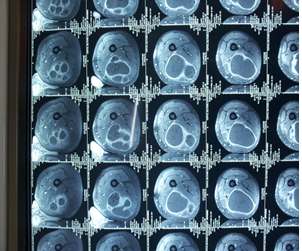
Figure 1: Aspect in magnetic resonance imaging (MRI) of an intramuscular hydatid cyst (KH).
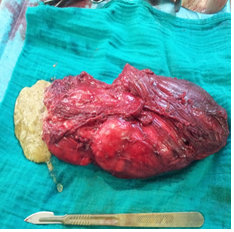
Figure 2: Piece of resection.
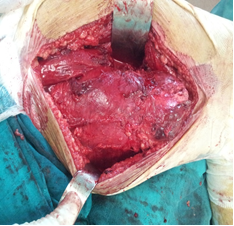
Figure 3 : Perikystectomy of the? tumor.
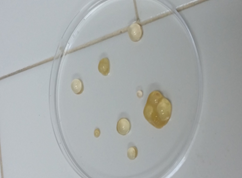
Figure 4: Opening of the surgical specimen and recovery of female vesicles.
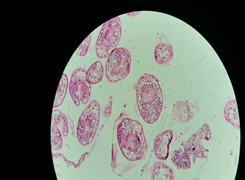
Figure 5: Protoscolex at high magnification.
3. Discussion
Hydatidosis is an endemic disease that poses a public health problem in certain areas in the world where livestock and sheep are farmed, particularly in the Mediterranean, the Middle East and South America [4]. This parasitosis is caused by the larva of TaeniaEchinococcusgranulosus which lives in the digestive tubetract of dogs, domestic or wild, and other carnivorous animals of which they are the definitive hosts. Humans are the accidental intermediate hosts when they ingest Taenia eggs [5]. Liver (60% of cases) and lung (20% of cases) are the two most frequent sites. This can be explained by the physiological role of the organs. Thus they constitute a double physiological filter in the dissemination of the parasite, making the extra-hepato-pulmonary localizations less frequent [6]. The incubation period can last from 5 to 20 years and symptoms occur several years after exposure [7]. The primary muscular hydatid cyst is rare even in endemic areas. Its frequency varies from 1 to 5%. Hexacanth embryos that penetrate by digestive tract are most often stopped by the filters that constitute the liver and the lungs [3]. Primary muscle damage is described in the literature for chest wall musculature, pectoral major, sartorius, quadriceps and gluteus [6-8].
In the case presented, the muscular localization was located with respect to the internal room of the thigh. MRI is the examination selected in hydatic pathology of the soft parts [5]. It allows, thanks to its high resolution in contrast, to better study the locoregional extension of the lesion and its relations with the vasculonerveous pedicles, while offering a careful analysis of the cystic walls. Ultrasound-guided needle biopsies are also an aid in diagnosis, although some authors do not recommend them because of the risk of cystic rupture and anaphylactic reaction [9]. The results of microscopic analyzes of needle biopsy are not guaranteed, especially if the patients have received medical treatment, and the biopsy area must be resected within the time of surgery [4]. Various serological tests may assist the diagnosis of echinococcosis. However, serology alone is not sufficient for diagnosis. There are 50% negative mistakes in patients with lung cysts [10]. The sensitivity and specificity of serological tests are not known in patients with soft tissue echinococcosis. This serology may be useful for monitoring the treatment when it is positive [4]. The treatment of muscular echinococcosis is surgical [4]. Surgery should be careful, avoiding the opening of the cyst during dissection. The surgical site must be protected by a solution of hypertonic saline and/or oxygenated water from the surgical approach [11]. The technique to be selected is the perkystectomy, taking the whole cyst without breaking the wall. The monoblock excision with complete pericystectomy is the ideal procedure, but not always feasible especially if the cyst is large and deep, contacting neighboring vasculo-nervous elements [11]. The interest of medical treatment with benzimidazole derivatives (albendazole) in the solitary locomotor system remains controversial because of the poor diffusion in the cystic fluid [4, 12]. This treatment is reserved for inoperable cases or in addition to surgery when the cyst is complicated with rupture [13].
4. Conclusion
Solitary hydatid localization in muscle tissue is exceptional, but it is useful to know it. The clinical picture is often poor and can mimic a soft tissue tumor. The diagnosis is confirmed by MRI. The treatment is surgical.
Conflict of Interest
No conflicts of interest.
References
- Kazakos CJ, Galanis VG, Verettas DA, et al. Primary hydatid disease in femoral muscles. J Int Med Res 33 (2005): 703-706.
- Ciss? AM, Nassar I, Hammani L, et al. Hydatidose primitiv et ?tendue de la cuisse : aspect radiologique inhabituel.J Radiol 83 (2002): 1778-1780.
- Jerbi Omezzine S, et al. Kyste hydatique primitif de la cuisse. Une localisation rare. Revue de chirurgie orthop?dique et traumatologique 96 (2010): 105-108.
- Amar MF, et al. Journal de Traumatologie du Sport 27 (2010): 146-148.
- Rafiqi K, Rafaoui A, Sirrajelhak M, et al. Kyste hydatique primitif de la cuisse chez un bodybuilder. ? propos d’un cas et revue de la litt?rature. Journal de Traumatologie du Sport 33 (2016): 107-109.
- Dawson JL, Stamatakis JD, Stringer MD, et al. Surgical treatment of hepatic hydatid disease. Br J Surg 75 (1988): 946-950.
- Ozkoc G, Akpinar S, Hersekli MA, et al. Primaryhydatiddisease of the quadriceps muscle: a rare localization. Arch Orthop Trauma Surg 123 (2003): 314-316.
- Combalia A, Sastre S. Kyste hydatique du muscle glut?al. Deux cas. Revuede la litt?rature. Rev Rhum 72 (2005): 851-857.
- Ozkoc G, Akpinar S, HersekliMA, et al. Primary hydatid disease of the quadriceps muscle: a rare localization. Arch Orthop Trauma Surg 123 (2003): 314-316.
- Kammerer WS, Schantz PM. Echinococcal disease. Infect Dis Clin North Am 7 (1993): 605-618.
- Mseddi M, Mtaoumi M, Dahmene J, et al. Ben AyecheHydatid cysts in muscles: eleven cases. Revue de chirurgie orthop?dique 91 (2005) 267-271.
- Hammami T, Noomane F, Ketata M, et al. Kyste hydatique musculaire de la cuisse. ? propos de trois observations.Rev Chir Orthop Reparatrice Appar Mot 88 (2002): 193-196.
- Daoudi A, Loudiyi WD, Elibrahimi A, et al. Le kyste hydatique sous-cutan? solitaire de la r?gion glut?ale: une localisation inhabituelle. ? propos d’un cas. Ann Chir Plast Esthet 53 (2008): 448-451.
Citation: Daoudi M, El Mezouari E, Azriouil O, Boukhris J, Margad O, Nadir Y, El Fikri A, Moutaj R, Koulali KI. Primary Hydatid Cyst and Isolated from the Thigh: An Exceptional Localization. Archives of Clinical and Medical Case Reports 2 (2018): 221-226.
